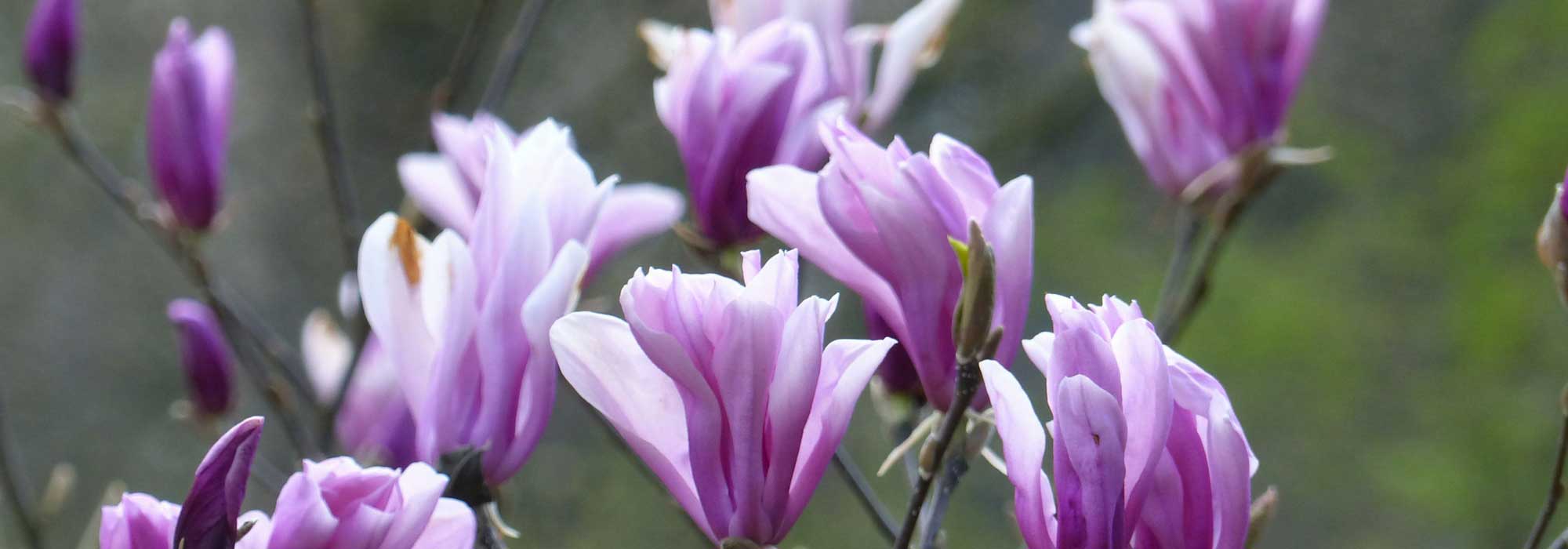
Magnolia: how to plant it properly in 4 steps?
Where, when, and how to plant?
Contents
Magnolias for ever, as the song goes! Magnolias are flowering trees or bushes highly valued for their spring or summer flowering and their always graceful appearance, suitable for gardens of all sizes.
Whether they are deciduous or evergreen, all exhibit beautiful hardiness (-15 to 25 °C), ensuring perfect resistance in all regions.
Remarkable when isolated as a focal point in a short grass meadow, grouped in a flowering hedge or in a large bed alongside heather soil shrubs, smaller Magnolias like M. stellata can also be grown in large containers.
Not demanding, they are easy to grow in full sun or partial shade, sheltered from cold and drying winds, in fresh, humus-rich soil with a neutral or acidic tendency.
Once well established, magnolias require little maintenance and prove to be resilient.
How to successfully plant them in isolation or trained against a wall, in the ground or in pots, when and how to plant them, follow our golden rules for cultivating these ornamental trees par excellence that always make a statement in the garden.
Where to plant?
the magnolias show remarkable hardiness and acclimatise in all regions, it is necessary, however, in the northern regions with long, harsh winters or windy conditions, to reserve a sheltered spot for them.
In a cold garden, plant the fragile, low-growing varieties against a south or west-facing wall; they will be able to withstand a long period of cold, thus protecting early spring-flowering species from frost.
They prefer protected situations, particularly from dominant and dry winds that may scorch their foliage and late frosts that can damage flower buds, leading to browning of petals, especially when they are young.
They may be sensitive to climates that are a bit too warm and especially to soils that dry out easily in summer.
Magnolias thrive in full sun or partial shade. They need maximum light to flower abundantly, ideally 7 hours of light per day. They require deep soil with a neutral or slightly acid pH (ideally between 5.5 and 6.5), not too dry, cool, and humus-bearing.
Most magnolias fear excessive limestone. Among the exceptions, Magnolia kobus and Magnolia grandiflora are the rare ones that tolerate soil with some traces of limestone.
Once well-rooted in a suitable location, they thrive year after year, becoming increasingly resilient and floriferous, provided they are not moved: the fragile roots of magnolias do not tolerate transplantation well. Therefore, think carefully about the location before planting.
Large magnolias should be reserved for vast parks, while smaller deciduous species will thrive in modest-sized gardens, in large pots, or trained against a wall. Allow sufficient space according to their adult size. Their appearance and growth will vary significantly depending on whether they are planted in the ground or in containers, in partial shade or full sun.
Depending on the varieties and their use, space the plants at least 5-6 m apart in all directions if you are planting several large magnolias or bushes, and 1.50 m apart for other plants in the beds.
Their resistance to air pollution makes them essential in city gardens.
Versatile, they fit into all settings. Charming when isolated in the middle of a lawn where their flowering is remarkable, they also find their place as a focal point in a bed of lower shrubs: small acers, forsythias, quince, roses, hibiscus, prunus.
Acidophilous, they are naturally associated with ericaceous plants such as rhododendrons, camellias, hydrangeas, or peonies.
With their elegant silhouette, they are part of Japanese gardens surrounded by sacred bamboos and Japanese maples. Grouped along pathways, they also form beautiful flowering hedges in spring and summer for evergreen magnolias.
After flowering, deciduous magnolias take on a rather unremarkable appearance; plant them with plants and shrubs that will take over, surround them with shade perennials like foxgloves.
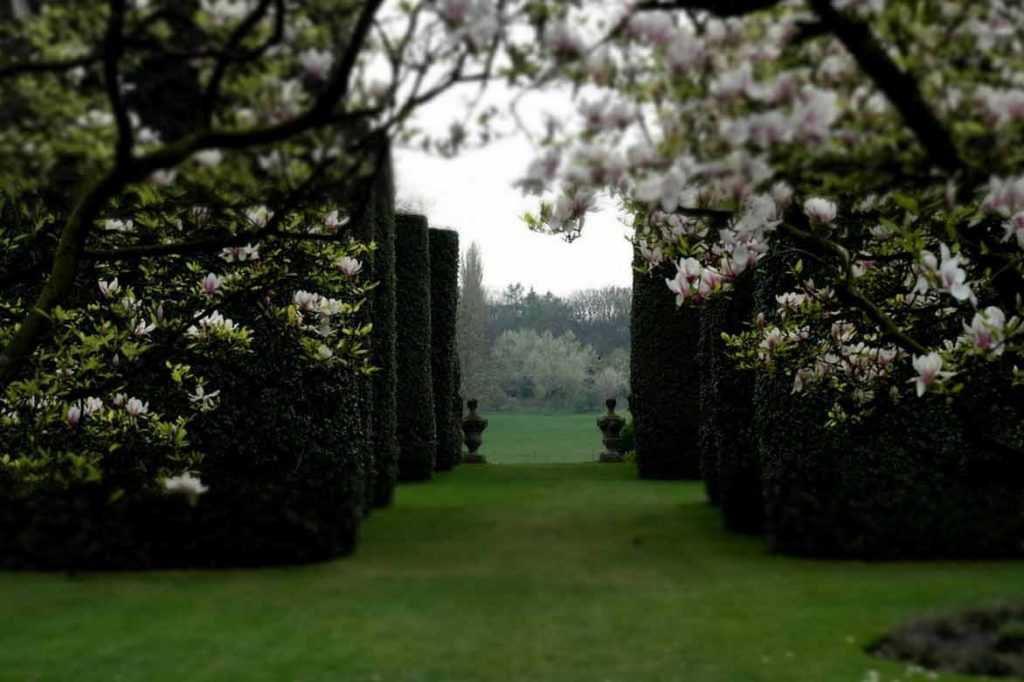 Magnolias create beautiful flowering hedges, either solitary or grouped along pathways
Magnolias create beautiful flowering hedges, either solitary or grouped along pathways
Read also
Magnolias: planting, pruning and careWhen to plant
Magnolias should be ideally planted in spring, in March or April in cold regions and from September to October in mild climates to encourage rooting before winter and regrowth in spring. However, planting can safely be done from March to May and from September to November. In all cases, it is imperative to avoid planting during frost periods!
Discover other Magnolia
View all →Available in 0 sizes
Available in 1 sizes
Available in 1 sizes
Available in 1 sizes
Available in 1 sizes
Available in 1 sizes
Available in 1 sizes
Available in 1 sizes
Available in 2 sizes
Available in 1 sizes
How to plant?

Fertile soil, good mulching, and regular watering in summer are the essentials for caring for magnolias.
In the ground
Step 1: Impeccable soil
Regarding soil type, magnolias have specific requirements. They thrive in deep, fertile, and cool soil. The soil must be rich in organic matter to allow the plant to bloom well. Prepare a mix of half native soil, heather soil, and a good supply of manure. Once a year, in spring or summer, if the vegetation is weak, amend the soil with an organic fertiliser such as ground horn.
Magnolias require soil with a neutral to slightly acidic pH (pH 6 to 7). Most do not tolerate excess lime well, and some species (Magnolia x loebneri and M. stellata) are particularly sensitive to it.
Magnolia grandiflora and the Kobe Magnolia are the few that can tolerate traces of lime in the soil. Soil that is too calcareous makes magnolias vulnerable to diseases, particularly chlorosis, which causes leaf yellowing and can ultimately lead to the tree’s decline.
Step 2: Give them depth and space
Magnolias can be planted alone or in groups of three. Space them at least 1.5 m from other plants, and at least 5-6 m apart if planting multiple bushes.
- Soak the root ball for 1 hour beforehand
- Using a spade, dig a wide planting hole at least 60 cm in diameter and depth.
- Loosen the bottom of the planting hole well
- Add a mixture of equal parts native soil, heather soil, and manure
- Optionally, add a good supply of gravel or pumice to ensure perfect drainage
- Gently remove and untangle its delicate roots
- Plant it at collar level, stake, backfill, and firm in a watering basin.
- Water generously with rainwater (non-calcareous) and monitor watering in summer. The soil should feel cool to the touch but never waterlogged.
- Spread a layer of mulch 8 cm thick to retain soil moisture in summer
Step 3: Keep them cool!
Magnolias are sensitive to soils that dry out easily in summer, especially in hot regions and during heatwaves, so monitor their water needs. It is wise to apply mulch before summer by spreading a good organic layer at the base of the tree. In March, provide a thick layer (8 cm) of BRF, bark, or pine needles to prevent soil evaporation and retain necessary moisture in summer, regardless of the region.
Water abundantly at planting and then every 10 days during dry weather for the first few years after planting. The soil should remain cool in summer; however, excess moisture in winter can be fatal. Magnolia denudata and Magnolia virginiana, or Virginia Magnolia, are the only ones that can tolerate very wet or even waterlogged soil.
Step 4: Protect them!
- In spring, protect young shoots from snails and slugs; if necessary, use fern manure to combat their attacks.
- In waterlogged and poorly drained soil, magnolias are threatened by root rot, coral disease, identifiable by its small orange pustules (discover how to prevent it), and Pestalozzia. These devastating fungi lead to decline or even complete defoliation of the tree. Acidic, well-drained, and light soil will help prevent their occurrence.
- In autumn, for the first few years, spread a good layer of organic mulch (4-5 cm of pine bark, manure, or leaves) before winter to protect it from cold and frost. In spring, in March, repeat the operation, especially on dry soils.
- If you fear late frosts on budding subjects, use a winter cover to protect them from the cold.
Container gardening
Their slow growth, lower hardiness, and moderate development of certain varieties (Magnolia ‘Fairy White’ and ‘Fairy Blush’, Magnolia stellata ‘Royal Star’) also allow for cultivation in large pots. Their compact habit and dense foliage will thrive on a sunny or partially shaded terrace to enjoy their lemony fragrance on summer evenings. When grown in large pots, their development is limited. They will reach heights of 80 cm to 2.50 m, and nearly the same in width, no more.
- Plant them in a pot at least 60 cm high with drainage holes and spread clay balls 10 cm deep to ensure root drainage.
- Prepare a mixture of equal parts potting soil, heather soil, and garden soil, and plant the bush at collar level.
- Water and keep the soil moist in summer without flooding the roots.
- Mulch in summer to retain moisture and before winter to protect the base from the cold.
- In spring and autumn, apply an organic fertiliser for heather soil.
- Prune the bush annually to contain its growth.
- In cold regions, if temperatures drop below -15°C, bring the pots indoors to protect them from severe frost.
- Plan to repot the bush every 3 to 5 years.
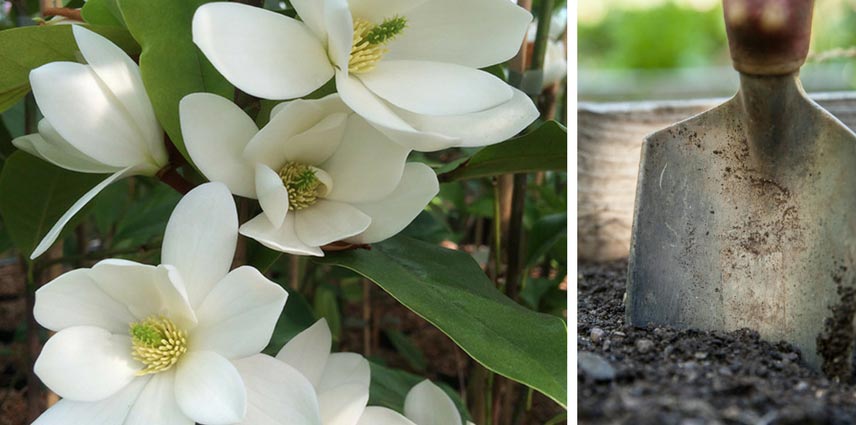
Magnolia ‘Fairy White’
- Subscribe!
- Contents































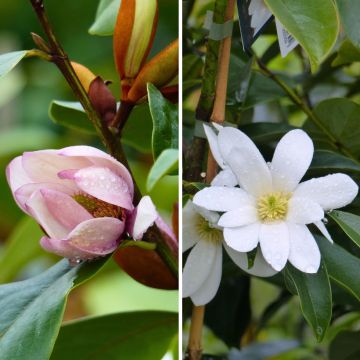
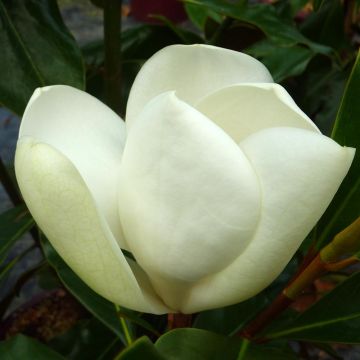
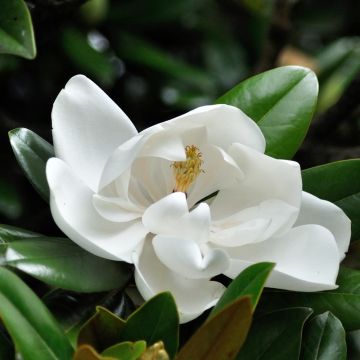
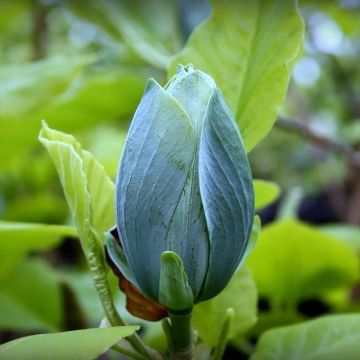
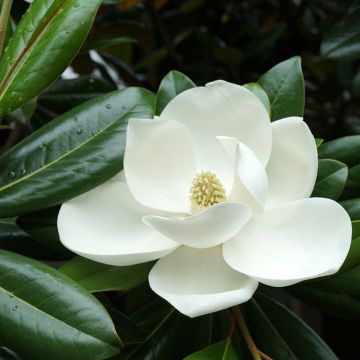
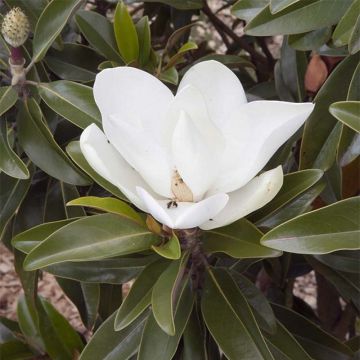
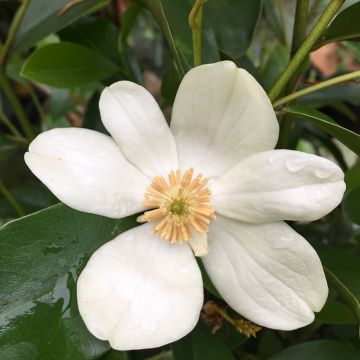
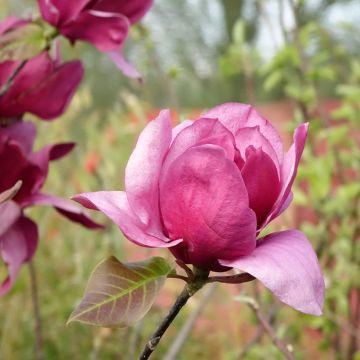
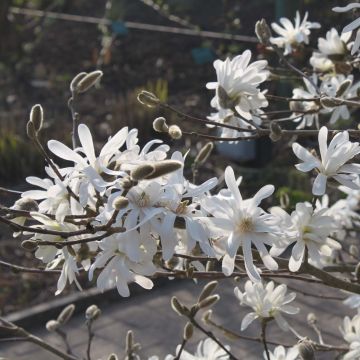
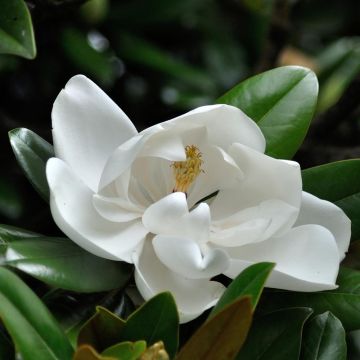
Comments